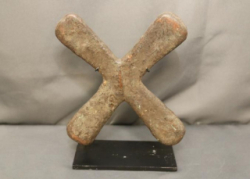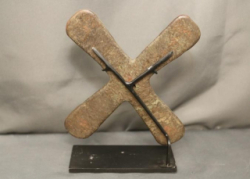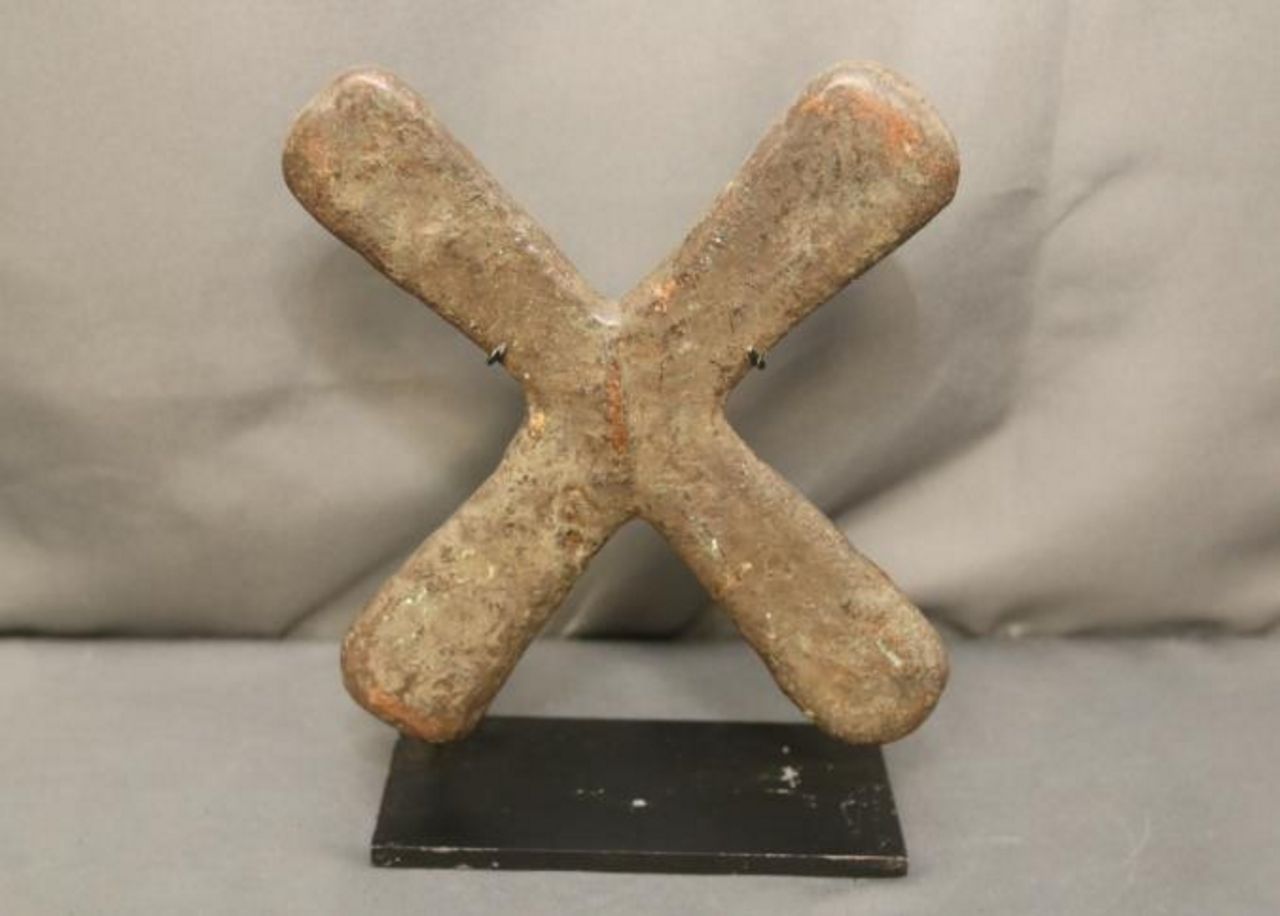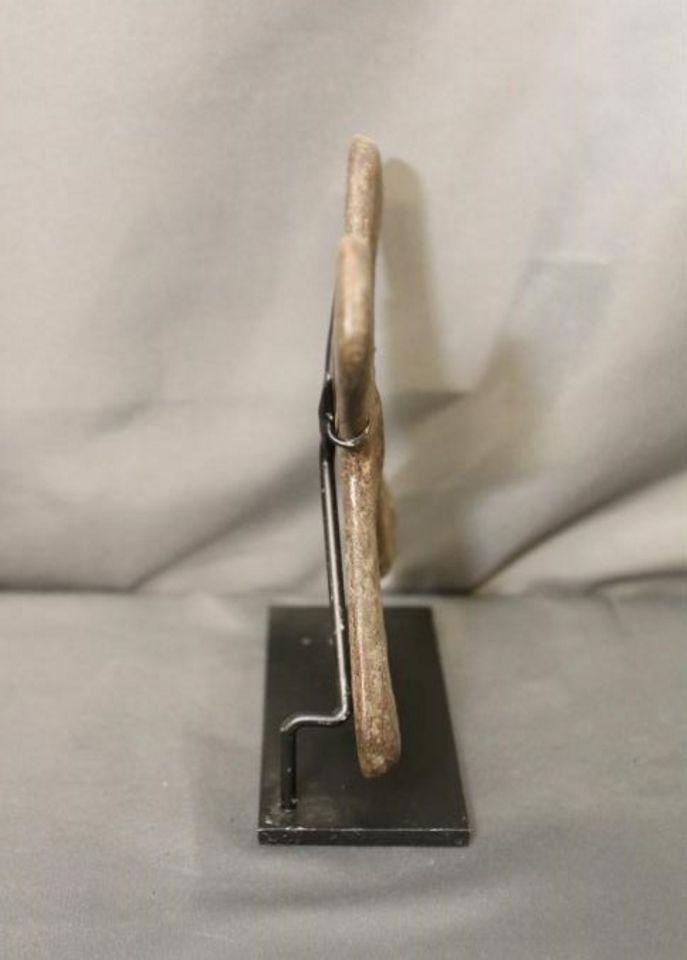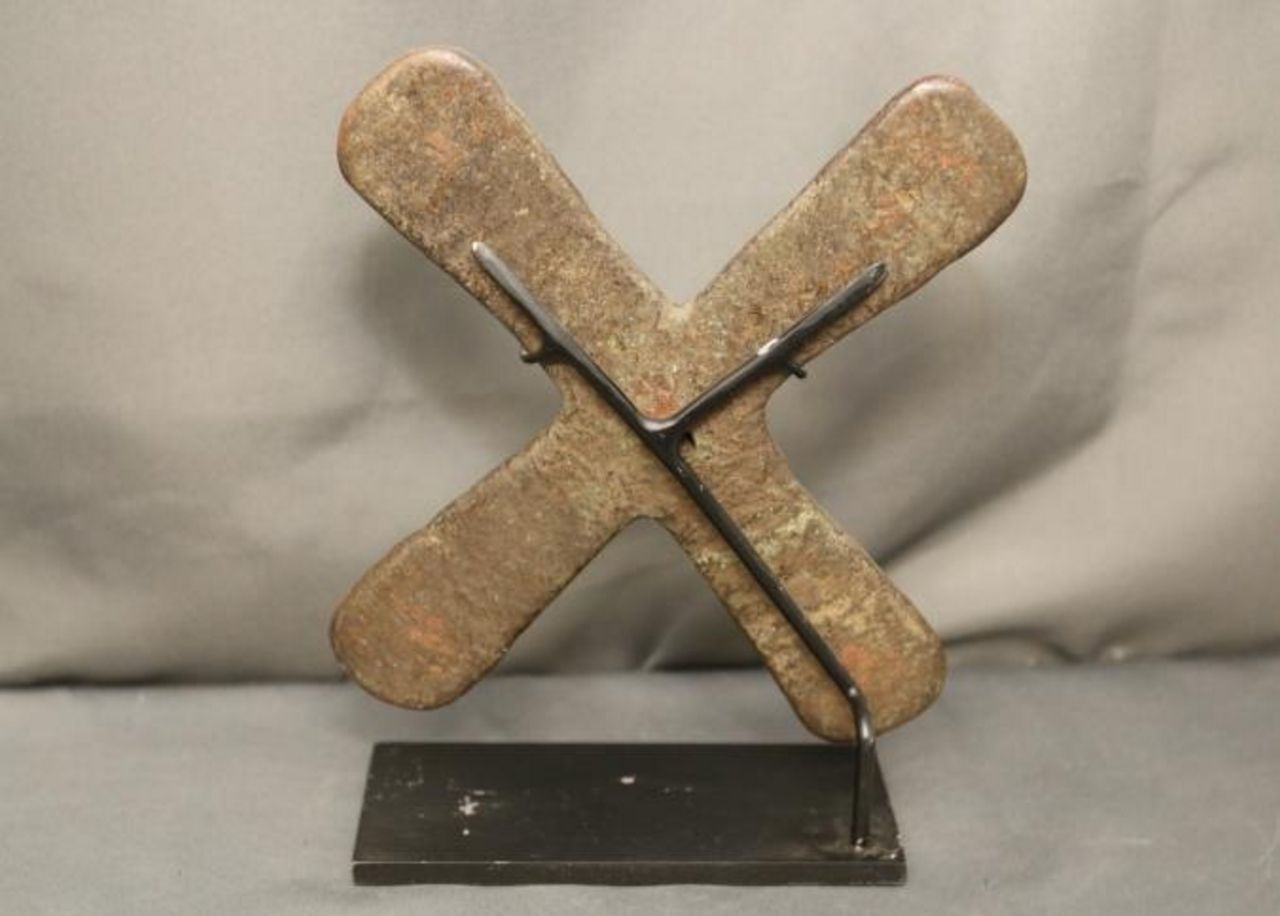Items located in Pleasant Valley, NY. Items include Asafo militia flag, Fante people, Ghana; gong rattle, Chamba people, Cameroon & Nigeria; blacksmith tools, Soninke people, Gambia; ceremonial fetish, Fon people; traditional women's hair pins, Bozo people, Mali; oil lamps, Dogon people, Mali; Cheetem rod currency, Anang people, Nigeria; wedding blanket, Fulani people, Mali or Niger; torque neck ring, Yoruba people, Nigeria; Cache Sexe ring, Kirdipeople, Cameroon & Northeast Nigeria; West African bells, Yoruba People, Nigeria; Duge necklaces, Dogon people, Mali and more.
AFRICAN ART COLLECTION OF MARY SUE AND PAUL PETER ROSEN
Mary Sue and Paul Peter Rosen have collected African art for over thirty years, making nine trips to Africa to study the art in its cultural setting. The Rosens have published three African art books, curated more than ten exhibitions from their collection, and have given public lectures about African art and culture. They have donated art from their collection to various institutions including the Newark Museum, Temple University in Philadelphia, the SMA Fathers African Art Museum in Tenafly, New Jersey, and the African American Research Library in Fort Lauderdale, Florida.
Payment is due by Friday, September 27 at 1PM.
Pickup in Pleasant Valley, NY must be completed by Friday, September 27 at 3PM.
All lots sold as is, where is. There is a 15% Buyers Premium for all lots purchased. Payment methods include cash, MC, Visa, Discover or good check. You can make credit card payment online by going to your Member Area and selecting your invoice.
*NOTE* Shipping is available on all items.
AFRICAN ART COLLECTION OF MARY SUE AND PAUL PETER ROSEN
Mary Sue and Paul Peter Rosen have collected African art for over thirty years, making nine trips to Africa to study the art in its cultural setting. The Rosens have published three African art books, curated more than ten exhibitions from their collection, and have given public lectures about African art and culture. They have donated art from their collection to various institutions including the Newark Museum, Temple University in Philadelphia, the SMA Fathers African Art Museum in Tenafly, New Jersey, and the African American Research Library in Fort Lauderdale, Florida.
Payment is due by Friday, September 27 at 1PM.
Pickup in Pleasant Valley, NY must be completed by Friday, September 27 at 3PM.
All lots sold as is, where is. There is a 15% Buyers Premium for all lots purchased. Payment methods include cash, MC, Visa, Discover or good check. You can make credit card payment online by going to your Member Area and selecting your invoice.
*NOTE* Shipping is available on all items.
Auction Info
Items located in Pleasant Valley, NY. Items include Asafo militia flag, Fante people, Ghana; gong rattle, Chamba people, Cameroon & Nigeria; blacksmith tools, Soninke people, Gambia; ceremonial fetish, Fon people; traditional women's hair pins, Bozo people, Mali; oil lamps, Dogon people, Mali; Cheetem rod currency, Anang people, Nigeria; wedding blanket, Fulani people, Mali or Niger; torque neck ring, Yoruba people, Nigeria; Cache Sexe ring, Kirdipeople, Cameroon & Northeast Nigeria; West African bells, Yoruba People, Nigeria; Duge necklaces, Dogon people, Mali and more.
AFRICAN ART COLLECTION OF MARY SUE AND PAUL PETER ROSEN
Mary Sue and Paul Peter Rosen have collected African art for over thirty years, making nine trips to Africa to study the art in its cultural setting. The Rosens have published three African art books, curated more than ten exhibitions from their collection, and have given public lectures about African art and culture. They have donated art from their collection to various institutions including the Newark Museum, Temple University in Philadelphia, the SMA Fathers African Art Museum in Tenafly, New Jersey, and the African American Research Library in Fort Lauderdale, Florida.
Payment is due by Friday, September 27 at 1PM.
Pickup in Pleasant Valley, NY must be completed by Friday, September 27 at 3PM.
All lots sold as is, where is. There is a 15% Buyers Premium for all lots purchased. Payment methods include cash, MC, Visa, Discover or good check. You can make credit card payment online by going to your Member Area and selecting your invoice.
*NOTE* Shipping is available on all items.
AFRICAN ART COLLECTION OF MARY SUE AND PAUL PETER ROSEN
Mary Sue and Paul Peter Rosen have collected African art for over thirty years, making nine trips to Africa to study the art in its cultural setting. The Rosens have published three African art books, curated more than ten exhibitions from their collection, and have given public lectures about African art and culture. They have donated art from their collection to various institutions including the Newark Museum, Temple University in Philadelphia, the SMA Fathers African Art Museum in Tenafly, New Jersey, and the African American Research Library in Fort Lauderdale, Florida.
Payment is due by Friday, September 27 at 1PM.
Pickup in Pleasant Valley, NY must be completed by Friday, September 27 at 3PM.
All lots sold as is, where is. There is a 15% Buyers Premium for all lots purchased. Payment methods include cash, MC, Visa, Discover or good check. You can make credit card payment online by going to your Member Area and selecting your invoice.
*NOTE* Shipping is available on all items.
Categories:
CRUCIFORM COPPER INGOT (KATANGA CROSS OR HANDA). Luba people, Katanga region Congo. These ingots were used as currency in the Congo and regions to the east in what is now Zambia, Botswana, and Zimbabwe. The Katanga region is rich in copper ore. In general, the value of handa increased with increasing distance from their origin. The molds into which molten copper was poured were carved in soapstone, made with fired clay, or created in wet sand. Note the characteristic raised rib on one side where the arms cross. A bride could be obtained with 14 handa, one goat, and a female slave. As late as 1907, a male slave cost 3 to 5 handa. They were still in use in the 1920s. On custom base. Copper. Dimension across one arm is 8. 5in.
More Details
CRUCIFORM COPPER INGOT (KATANGA CROSS OR HANDA). Luba people, Katanga region Congo. These ingots were used as currency in the Congo and regions to the east in what is now Zambia, Botswana, and Zimbabwe. The Katanga region is rich in copper ore. In general, the value of handa increased with increasing distance from their origin. The molds into which molten copper was poured were carved in soapstone, made with fired clay, or created in wet sand. Note the characteristic raised rib on one side where the arms cross. A bride could be obtained with 14 handa, one goat, and a female slave. As late as 1907, a male slave cost 3 to 5 handa. They were still in use in the 1920s. On custom base. Copper. Dimension across one arm is 8. 5in.
High Bid:
$90.00 – gaithaus
Auction Type: One Lot
Quantity: 1
Bidding has closed on this lot


